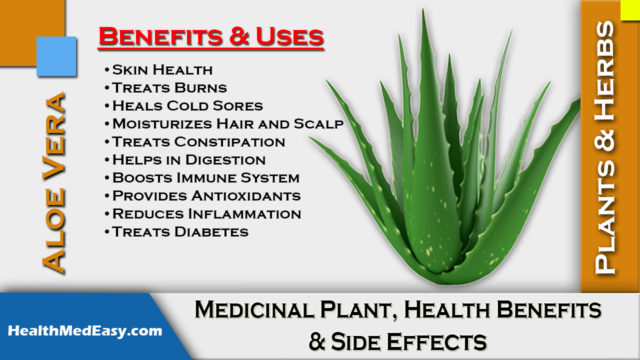Aloe vera does not need an introduction. Its benefits are known, so it has a permanent place in many homes. If it is a burn or a bad condition of acne, aloe vera is a treatment that you can always count on.
But did you know that the humble cactus has much more to offer? The cactus is a succulent plant and stores water in its leaves, which are thick and fleshy. The leaves produce two substances: the gel, which is more or less water with many other nutrients mixed, and the sap, also known as aloe latex.
Jump to
Aloe Vera – A Miracle Plant
Mainly Aloe Vera produces two substances used in medicine. One is the gel which can be obtained from the center of the leaf, and the other one is latex which obtained from the cells just below the skin of the leaves.
We can use aloe gel as a treatment for various skin issues like psoriasis, sunburn, burns, freezing and cold sores, but the actual potential of aloe vera are wide-ranged. Aloe gel is used to treat inflammation, itching, osteoporosis, intestinal diseases, and fever.
As a natural remedy to treat natural depression, constipation, asthma, diabetes, stomach ulcers, and the sedative side effects of radiation therapy it can also be used. It is gaining popularity because it is completely natural – and is called a miracle plant.
Aloe Vera – Plant Details
Aloe Vera is a perennial, xerophilic, juicy plant that is green and has triangular and fleshy leaves with toothed edges. It is assumed that the geographical origin of Aloe Vera is located in Sudan and later in the Mediterranean region and most other warm regions of the world, including Africa, Asia, India, Europe, and America.
Aloe gel is a clear and gelatinous substance that occurs in the leaf of the plant. The aloe latex comes from the skin of the plant and is yellow. Some aloe based cosmetic products are made from the whole shredded leaf so that they contain both gel and latex. This extract contains 20 of the 22 amino acids required by humans and 8 of the 8 essential amino acids.
Aloe Vera – Benefits and Uses
1) Skin Health
From the ancient age of time many pieces of evidence that have revealed the role of topical application of Aloe Vera for skin diseases and treatment of wound healing, including treatment of dermatitis, surgical wounds, psoriasis, stomatitis and home remedies for rapid relief from itching and burning associated with severe radiation dermatitis and skin regeneration and can also be used safely as an antimicrobial and antifungal agent.
2) Treats Burns
The gel protects against damage from skin irradiation. Facing the threat of a nuclear war, the US government has investigated the ability of Aloe Vera to treat burns by heat and radiation to contribute to its use in the military. When the gel is used in burns, it prevents UV-induced suppression so that the area can heal faster.
3) Heals Cold Sores
When the gel is applied a few times a day on cold sores, it relieves discomfort and speeds up the healing process. It is also safe when consumed by the mouth, so you do not have to worry about swallowing this natural treatment.
It has very useful components like vitamin C, amino acids, vitamin B1, vitamin B2, vitamin B6 are also very useful which acts as a natural treatment for pain and produces antibodies that our immune system uses to protect us.
4) Moisturises Hair and Scalp
It is an excellent natural remedy for an itchy scalp and dry hair. Its nutritional properties and tons of vitamins and minerals present in it help to keep your hair strong and healthy.
As it has antifungal and antibacterial properties, the aloe gel can remove dead cells from the scalp, helps the itch associated with dandruff or a dry scalp and also promotes the regeneration of hair follicles.
Chemicals, that present in hair products like conditioners and shampoos, can greatly damage your hair and even cause inflammation and skin irritation. Here, in this case, aloe vera based product is an effective way to keep your scalp free of bacteria and unpleasant skin reactions.
5) Treats Constipation
Stronger than many various laxative stimulants the anthraquinones element present in the aloe latex boosts mucus secretion, intestinal water content and helps in intestinal peristalsis which ultimately helps to treat constipation problem.
6) Helps with Digestion
Another benefit of aloe juice is its ability to assist in digestion, due to its anti-inflammatory and laxative components. It maintains acid and alkaline balance (pH Balance), prevent yeast formation, bowel syndrome, helps to generate digestive bacterias and regulates intestinal functioning. It has been used to relieve and cure stomach ulcers because it has natural and antibacterial healing properties that can make the stomach healthy again.
7) Boosts the Immune System
The enzymes contained in it break down the proteins we take into amino acids and transform the enzymes into fuel cells for every cell in the body, meaning that the cells work properly. Bradykinase in aloe vera stimulates the immune system and kills infections.
The gel has a high amount of zinc which helps in its deficiency and maintain the immune system to function efficiently. Zinc also helps prevent diseases, kill bacteria and protect the function of our cell membranes.
8) Provides Antioxidants and Reduces Inflammation
Aloe Vera provides an incredible number of essential vitamins and minerals that fight with free radical damage and help reduce inflammation which is the root of most diseases.
Vitamin A is essential to keep our eyes healthy, maintaining proper neurological function, and healthy skin by reducing inflammation due to its antioxidant property. Vitamin C protects our skin, heart, blood free from diseases. As vitamin E is a powerful antioxidant, it reduces the damage caused by free radicals, prevents inflammation and thus slows down the aging process of cells and keep us very young.
These antioxidant properties are also useful when exposed to sunlight by cigarette smoke or UV rays. They protect skin from skin cancer and fight skin infections after sun exposure. This gel can also treat acne and eczema naturally as it supports the healing process on the skin. Bradykinase, also contained in aloe vera, helps with excessive swelling when applied topically to the skin.
9) Treats Diabetes
Aloe Vera is also effective and natural cure for diabetic patients and reduces cardiovascular complications as it can alleviate chronic hyperglycemia and change lipid profile, important risk factors for cardiovascular complications. The gel helps in reduction of serum glucose and triglyceride level.
Aloe Vera – History and Interesting Facts
It was officially introduced in 1820 by the American Pharmacopoeia as a laxative and a skin protection agent and was used clinically in the 1930s to treat radiation burns on the skin and mucous membranes. Nowadays, cosmetics manufacturers add juice or other derivatives of aloe vera products such as makeup, soaps, sunscreen, incense, shaving foam, shampoos, tissues, and moisturizers. It is used as an ingredient in yogurts, beverages, and desserts. Its extracts are used as preservatives and for water protection on small farms.
Aloe Vera – How to Find
While Aloe Vera product is made some processing method has to be applied such as milling, grinding or pressing, filtration, stabilization etc. which has the greatest impact on the number and amount of active ingredients in it. It was found that health benefits are minimized after gel extraction, heating and the use of fillers for the production of Aloe Vera-based products.
The International Council Aloe Science has developed a certification program that demonstrates the quality and quantity of Aloe Vera in approved commercial products to put an end to the usual false statements in the industry and the misunderstanding that all Aloe Vera products provide the same benefits. If you want to buy its products, read the labels carefully and look for this important certification.
It is easy to find aloe vera products – including aloe gel, latex, juices, and extracts – in your health food store. You can also get a live plant and grow it in a sunny window. The pot can also be kept outdoors in summer months. It is a very inexpensive plant to buy.
Aloe is a succulent plant and therefore saves a lot of water on its leaves, but needs watering 2-3 times in a month. This is how one can get all these amazing benefits of aloe vera every day.
Aloe Vera – The Recommended Dosage
The recommended dosage of Aloe Vera should be written on its product packaging. But before taking or using them and tell your doctor if you notice any side effects:
- In case of constipation, 100 to 200 mg of Aloe Vera is taken daily.
- Use 0.5% aloe extract cream three times a day to heal wounds, psoriasis, and other skin infections.
- Use a toothpaste 24 weeks containing Aloe Vera for dental plaque and gum disease, or add a teaspoon of its gel to your mineralized toothpaste.
- For high cholesterol, take one capsule of Aloe Vera, which contains two milligrams twice a day for two months.
- For chronic inflammatory diseases, take 100 milliliters twice daily for four weeks.
- Use a 97.5% aloe gel for skin burns until it heals.
- For dry scalp or dandruff, add a teaspoon of aloe gel to my honey and citrus shampoo.
- To protect your skin from infections and bacteria, add a teaspoon of aloe gel to my body lotion.
Aloe Vera – Possible Side Effects and Warning
Though the gel has various miracle benefits following points has to be taken care of before using it.
- A high amount of aloe latex can cause side effects such as intestine problems.
- Its longer period of usage can also cause diarrhea, kidney failure, blood in the urine, minerals imbalance, muscle damage, weight loss, and heart problems etc.
- Do not take aloe vera, gel or latex if you are pregnant or breastfeeding. There are reports of aloe causing miscarriages and congenital malformations.
- Children under 12 years of age may experience abdominal pain, cramps, and diarrhea. So it is not recommended for children.
- If you have diabetes, some studies suggest that aloe may lower blood sugar. So if you take aloe by mouth and have diabetes, you should monitor your blood sugar level closely.
- In case if you are suffering from intestinal disorders such as Crohn’s disease, blockages, ulcerative colitis, do not take aloe vera in any form.
- Aloe vera can aggravate the condition if you are suffering from Hemorrhoids. Do not take it in this health condition.
- High doses of aloe latex have been associated with kidney failure and other serious disorders. Do not take aloe vera if you have kidney problems.
- Aloe can affect blood sugar levels and affect blood glucose control during and after surgery. Stop taking aloe at least two weeks before a scheduled operation.
Important Note: Health Med Easy always highly recommend to consult your doctor before taking Aloe Vera internally whenever you are on medications and in normal condition too.



